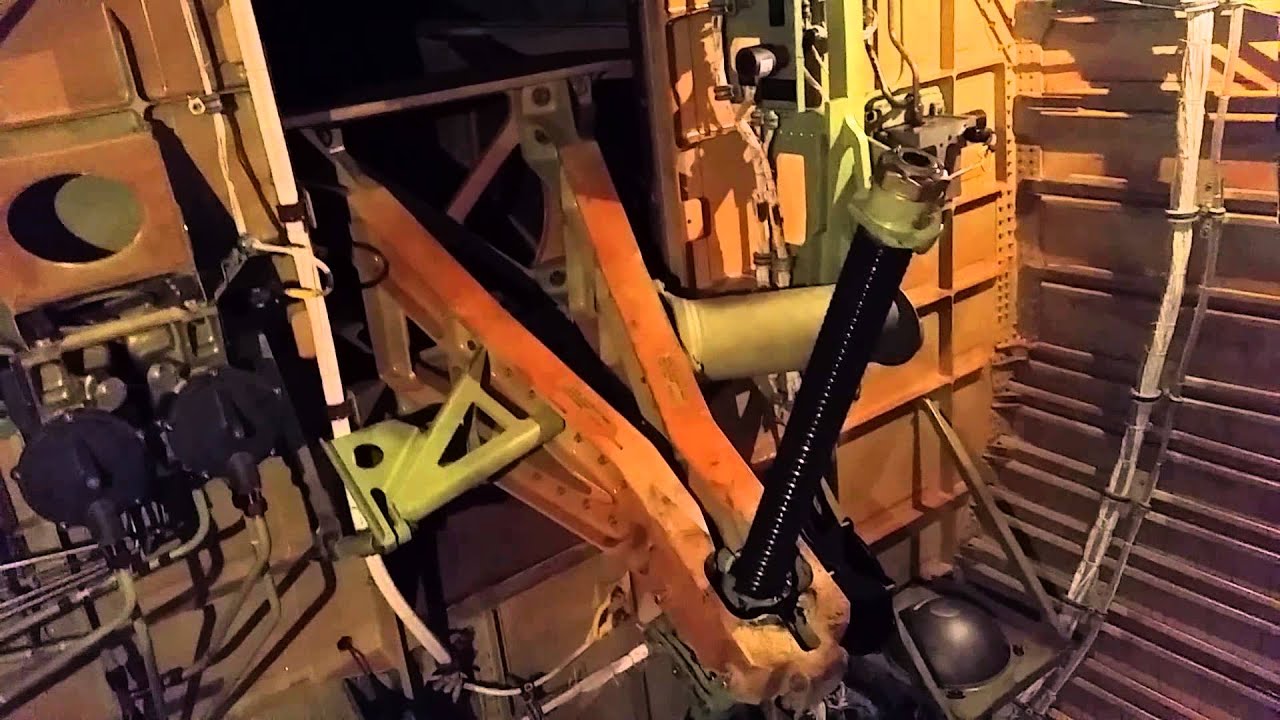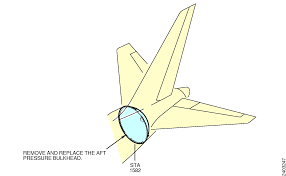It looks like you're using an Ad Blocker.
Please white-list or disable AboveTopSecret.com in your ad-blocking tool.
Thank you.
Some features of ATS will be disabled while you continue to use an ad-blocker.
share:
a reply to: Ravenwatcher
Yes, it was a 737, and no it can't be. That problem is specific to the 737 Max family, which is the newest version of the 737 family. The aircraft that crashed is a 737-800, which is a member of the 737 Next Generation family. It doesn't have the same software requirements as the 737 Max.
Yes, it was a 737, and no it can't be. That problem is specific to the 737 Max family, which is the newest version of the 737 family. The aircraft that crashed is a 737-800, which is a member of the 737 Next Generation family. It doesn't have the same software requirements as the 737 Max.
a reply to: carewemust
No. They wouldn't even get close. The altitude would depend on how they climbed. If they just started climbing in a normal profile they'd reach what's called their service ceiling far before that point. A 737-800 could only reach 41,000 feet. The service ceiling is the point at which a jet can maintain a 500 foot per minute climb at maximum continuous power. Going above that altitude, they can no longer maintain that climb rate. If they were to build up airspeed, and pull the nose up they could go above that altitude, but only until they ran out of airspeed, at which point they would descend back down to where they could maintain altitude again.
No. They wouldn't even get close. The altitude would depend on how they climbed. If they just started climbing in a normal profile they'd reach what's called their service ceiling far before that point. A 737-800 could only reach 41,000 feet. The service ceiling is the point at which a jet can maintain a 500 foot per minute climb at maximum continuous power. Going above that altitude, they can no longer maintain that climb rate. If they were to build up airspeed, and pull the nose up they could go above that altitude, but only until they ran out of airspeed, at which point they would descend back down to where they could maintain altitude again.
originally posted by: Zaphod58
a reply to: sarahvital
Bodies in plane crashes aren’t bodies anymore. Even in a relatively “soft” impact the passenger remains are not intact as recognizable bodies. In an impact like this, it will take days for them to find anything you can recognize as human remains. And those will be very small fragments of bodies.
oh yes. i know that but my wife was translating cantonese from the presenter of the news.
to me they would be a big pudding at the bottom of the crater the plane made.
originally posted by: Zaphod58
a reply to: carewemust
No. They wouldn't even get close. The altitude would depend on how they climbed. If they just started climbing in a normal profile they'd reach what's called their service ceiling far before that point. A 737-800 could only reach 41,000 feet. The service ceiling is the point at which a jet can maintain a 500 foot per minute climb at maximum continuous power. Going above that altitude, they can no longer maintain that climb rate. If they were to build up airspeed, and pull the nose up they could go above that altitude, but only until they ran out of airspeed, at which point they would descend back down to where they could maintain altitude again.
That is fascinating and really does makes "rocket science" something special.
I'm going to look into why some vehicles can keep going into space and others can't.
Thank-you again Zaphod.
a reply to: PacificViking
I have the same feeling.
The cause of the second dive reminds me so much of Alaska 261's final plunge. When the nut gave way completely and it went beyond limits.
And the first plunge, the one coincidening with descent, leads me to control surface malfunction. It has elements of UAL 585 where a minor manual input caused a full reversal of a servo going to full deflection of the control surface.
I don't know enough.
Do the servos for the hydraulics in the elevator work same as the ones for the rudder?
Could this be a possibility?
Awaiting data recorder. Particularly the inputs from the autopilot as descent initiated.
This suggests to me they overstressed the airframe pulling out of their first descent and something broke, either the horizontal stabilizer (elevator) or its JACKSCREW , etc?
I have the same feeling.
The cause of the second dive reminds me so much of Alaska 261's final plunge. When the nut gave way completely and it went beyond limits.
And the first plunge, the one coincidening with descent, leads me to control surface malfunction. It has elements of UAL 585 where a minor manual input caused a full reversal of a servo going to full deflection of the control surface.
I don't know enough.
Do the servos for the hydraulics in the elevator work same as the ones for the rudder?
Could this be a possibility?
Awaiting data recorder. Particularly the inputs from the autopilot as descent initiated.
edit on 23-3-2022 by Degradation33 because: (no
reason given)
originally posted by: Degradation33
a reply to: PacificViking
This suggests to me they overstressed the airframe pulling out of their first descent and something broke, either the horizontal stabilizer (elevator) or its JACKSCREW , etc?
I have the same feeling.
The cause of the second dive reminds me so much of Alaska 261's final plunge. When the nut gave way completely and it went beyond limits.
And the first plunge, the one coincidening with descent, leads me to control surface malfunction. It has elements of UAL 585 where a minor manual input caused a full reversal of a servo going to full deflection of the control surface.
I don't know enough.
Do the servos for the hydraulics in the elevator work same as the ones for the rudder?
Could this be a possibility?
Awaiting data recorder. Particularly the inputs from the autopilot as descent initiated.
Nope the horizontal stabilizer (tail-plane) is not operated by a servo . It is driven by an electric motor on a Jackscrew

Whilst it is a fair bet that the Jack screw failed, this would be a secondary cause for the accident. If this plane descended beyond safe operating speed VNE/ VMO, One would reasonably expect structural failure pulling out from an overspeed dive.
Even if that is the case you don't prevent future accidents until the initial cause is identified. Did pilots dive intentionally, then , if so, why?
edit on 23-3-2022 by PacificViking because: typo spelling correction
a reply to: Degradation33
I haven't heard of a 737 ever having a problem with the elevators similar to Alaska 261. There are a couple of other things that could cause an elevator malfunction, but it's unlikely that it was a similar cause to that accident.
I haven't heard of a 737 ever having a problem with the elevators similar to Alaska 261. There are a couple of other things that could cause an elevator malfunction, but it's unlikely that it was a similar cause to that accident.
originally posted by: PacificViking
a reply to: Bigburgh Many diverse things can cause a sharp descent. Before you judge without cause, context is everything, wait for the CVR.
True, I'm ARFF not a pilot Jim!!
Hehe.
Thanks.
I decided to read all about the tail so I stop asking noobish questions and getting things wrong.
And this gets weirder and weirder the more I learn about it.
I have fake flown so much I have had tons of "realism" failures. FSX is pretty good at recoverable static ones. I once had the auto-weather option change wind direction so dramatically it deflected both elevators about 10-15 degrees. Making the center of it's range of motion that. I managed to land compensating with pulling back, slower speeds, flaps, and stab trim. I lost about 15k from cruise before I recovered. And then slowing it down and keeping the nose up was a task. I just bring it up because the plane never rolled similar to this. And if it "broke more" at the point I leveled off it would have the same profile. Though you can't really compare that to real life.
I really hope all data can be recovered and that it isn't a input from the flight yoke that caused it to pitch down.
I decided to read all about the tail so I stop asking noobish questions and getting things wrong.
And this gets weirder and weirder the more I learn about it.
I have fake flown so much I have had tons of "realism" failures. FSX is pretty good at recoverable static ones. I once had the auto-weather option change wind direction so dramatically it deflected both elevators about 10-15 degrees. Making the center of it's range of motion that. I managed to land compensating with pulling back, slower speeds, flaps, and stab trim. I lost about 15k from cruise before I recovered. And then slowing it down and keeping the nose up was a task. I just bring it up because the plane never rolled similar to this. And if it "broke more" at the point I leveled off it would have the same profile. Though you can't really compare that to real life.
I really hope all data can be recovered and that it isn't a input from the flight yoke that caused it to pitch down.
edit on 23-3-2022 by
Degradation33 because: (no reason given)
originally posted by: Zaphod58
a reply to: carewemust
High speed crashes wouldn’t be a problem because the planes would be too heavy to fly.
Those are busses and trains.
a reply to: carewemust
They can go into space because they usually carry the oxidizer for their fuel with them.
They can go into space because they usually carry the oxidizer for their fuel with them.
Just learned the FDR was found 10 kilometres away from the main crash site. This means the tail empennage came off in flight , possibly before the
nose dive. It may also mean no useful data was recorded.

In my experience only catastrophic rupture of the rear pressure bulkhead could cause separation of the tail empennage, which itself is a very rare event.
I have only seen empennage separation on JAL123, and Metro Air 9268 in Egypt.

In my experience only catastrophic rupture of the rear pressure bulkhead could cause separation of the tail empennage, which itself is a very rare event.
I have only seen empennage separation on JAL123, and Metro Air 9268 in Egypt.
a reply to: PacificViking
US Air Flight 427 had separation. It was just before impact so it didn't travel far. I believe that a rudder trim tab was found about two miles from the main crash site.
Your mention of the JAL 747 was interesting. The JAL failure was because of a missing row of rivets on a repair to a damaged rear pressure bulkhead. I once heard an interesting thing about that. I heard that Boeing sent the drawings for the repair to their traveling team by Fax and the fax machine left off the markings for a row of rivets. I can't confirm that, but, it is interesting. I wonder if this flight had any record of over-rotation resulting in a tail strike? That's what caused the initial damage to the JAL aircraft.
US Air Flight 427 had separation. It was just before impact so it didn't travel far. I believe that a rudder trim tab was found about two miles from the main crash site.
Your mention of the JAL 747 was interesting. The JAL failure was because of a missing row of rivets on a repair to a damaged rear pressure bulkhead. I once heard an interesting thing about that. I heard that Boeing sent the drawings for the repair to their traveling team by Fax and the fax machine left off the markings for a row of rivets. I can't confirm that, but, it is interesting. I wonder if this flight had any record of over-rotation resulting in a tail strike? That's what caused the initial damage to the JAL aircraft.
edit on 25-3-2022 by JIMC5499 because: (no reason
given)
There was a four foot long piece found six miles away. I haven’t heard anything about the FDR being found that far away. If it had come apart badly
enough that the FDR landed that far away, you’d expect the CVR to land some distance away.
originally posted by: JIMC5499
a reply to: PacificViking
US Air Flight 427 had separation. It was just before impact so it didn't travel far. I believe that a rudder trim tab was found about two miles from the main crash site.
Your mention of the JAL 747 was interesting. The JAL failure was because of a missing row of rivets on a repair to a damaged rear pressure bulkhead. I once heard an interesting thing about that. I heard that Boeing sent the drawings for the repair to their traveling team by Fax and the fax machine left off the markings for a row of rivets. I can't confirm that, but, it is interesting. I wonder if this flight had any record of over-rotation resulting in a tail strike? That's what caused the initial damage to the JAL aircraft.

Unless this aircraft had some tail strike damage, then it is likely a flaw in manufacture by Boeing given such a young airframe. This could destroy trust in the Boeing brand worldwide.
a reply to: PacificViking
What's the source for the FDR being found six miles away? The only thing I can find about anything being found that far away says that it was a piece about four feet long, and four inches wide, which sounds like a trim tab. The FDR was reported found by one outlet, but nothing was said about it being found six miles away.
ETA: Now it's being reported that it hasn't been found. The initial report that it had been was in error.
What's the source for the FDR being found six miles away? The only thing I can find about anything being found that far away says that it was a piece about four feet long, and four inches wide, which sounds like a trim tab. The FDR was reported found by one outlet, but nothing was said about it being found six miles away.
ETA: Now it's being reported that it hasn't been found. The initial report that it had been was in error.
edit on 3/25/2022 by Zaphod58 because: (no reason given)
edit on 3/25/2022 by Zaphod58 because: (no reason given)
a reply to: Zaphod58
second black box found 10km away
The source was China Civil Aviation Authority, however they have since withdrawn that notification and apologized
CAAC withdraws notification about finding FDR:

second black box found 10km away
The source was China Civil Aviation Authority, however they have since withdrawn that notification and apologized
CAAC withdraws notification about finding FDR:

edit on 25-3-2022 by PacificViking because: typo spelling correction
new topics
-
Joe Biden gives the USA's Highest Civilian Honor Award to Hillary Clinton and George Soros.
US Political Madness: 58 minutes ago -
Winter Storm
Fragile Earth: 1 hours ago -
Biden Face Planted Somewhere
Politicians & People: 3 hours ago -
A great artist and storyteller, for kids of all ages
General Entertainment: 4 hours ago -
What Is 'Quad Demic'? Mask Mandate Returns In These US States
Diseases and Pandemics: 7 hours ago -
The Future of fashion .
Social Issues and Civil Unrest: 8 hours ago -
Bin Cyber Junk…
Short Stories: 9 hours ago -
The Undertones - Teenage Kicks
Music: 9 hours ago -
Volcano Watch 2025
Fragile Earth: 10 hours ago
top topics
-
What Is 'Quad Demic'? Mask Mandate Returns In These US States
Diseases and Pandemics: 7 hours ago, 9 flags -
The Future of fashion .
Social Issues and Civil Unrest: 8 hours ago, 6 flags -
Volcano Watch 2025
Fragile Earth: 10 hours ago, 5 flags -
Bin Cyber Junk…
Short Stories: 9 hours ago, 5 flags -
Joe Biden gives the USA's Highest Civilian Honor Award to Hillary Clinton and George Soros.
US Political Madness: 58 minutes ago, 5 flags -
Biden Face Planted Somewhere
Politicians & People: 3 hours ago, 4 flags -
A great artist and storyteller, for kids of all ages
General Entertainment: 4 hours ago, 3 flags -
Winter Storm
Fragile Earth: 1 hours ago, 3 flags -
The Undertones - Teenage Kicks
Music: 9 hours ago, 2 flags
active topics
-
Winter Storm
Fragile Earth • 9 • : DAVID64 -
Tesla Cybertruck Explodes in Front of Trump Hotel in Las Vegas
Mainstream News • 221 • : fringeofthefringe -
Joe Biden gives the USA's Highest Civilian Honor Award to Hillary Clinton and George Soros.
US Political Madness • 8 • : WeMustCare -
Strange fog all over the northern hemisphere
General Conspiracies • 49 • : Irishhaf -
Biden Face Planted Somewhere
Politicians & People • 6 • : NoCorruptionAllowed -
My personal experiences and understanding of orbs
Aliens and UFOs • 37 • : Compendium -
What Is 'Quad Demic'? Mask Mandate Returns In These US States
Diseases and Pandemics • 26 • : Xtrozero -
Judge rules president-elect Donald Trump must be sentenced in 'hush money' trial
US Political Madness • 17 • : Vermilion -
The Why Files Lacerta Reveals the Truth of our Creation
Aliens and UFOs • 12 • : Astrocometus -
The Future of fashion .
Social Issues and Civil Unrest • 17 • : Flyingclaydisk

